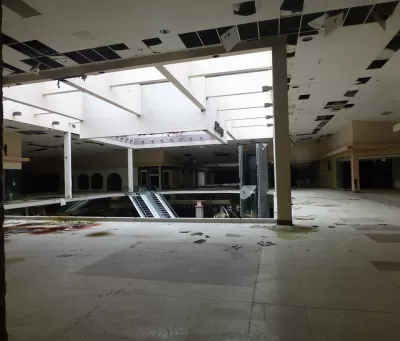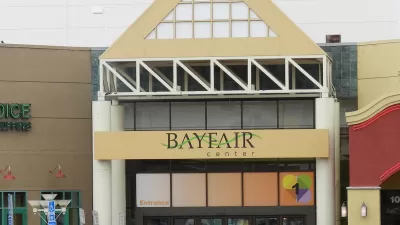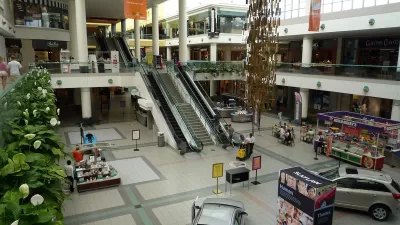Closed and struggling malls around the country are being repurposed as healthcare centers.

Sprawling suburban malls have fallen on hard times lately. But as Blake Farmer reports, the largely defunct complexes are serving a new function: healthcare. “What big-city health systems need most is something shopping malls have plenty of: space and parking. They offer convenience for patients and practitioners, as well as costing less than expanding an existing hospital campus.”
According to the article, “Nationwide, 32 enclosed malls house health care services in at least part of their footprint, according to a database kept by Ellen Dunham-Jones, a Georgia Tech urban design professor.” Many of these opened during the pandemic, writes Farmer, “but medicine’s reuse of retail space is more than pandemic opportunism, according to a November article in the Harvard Business Review. The three authors suggest the rise of telemedicine and continued push toward outpatient procedures will make malls increasingly attractive locations for health care.”
Meanwhile, “Mall locations remain desirable. Many are even more convenient to dense populations and interstates than when they were built nearly 50 years ago, before surrounding suburbs filled in.” And the demographics make sense, too: “These areas are no longer filled primarily with young families, who first flocked to the planned neighborhoods and shopping centers built in the 1970s.” Now, “The adults are still in the suburbs, but the kids have long since grown,’ Dunham-Jones said. And now those aging parents who remain are ‘pretty heavy-duty health care consumers.’”
FULL STORY: Some struggling shopping malls in the U.S. are being converted into health clinics

Alabama: Trump Terminates Settlements for Black Communities Harmed By Raw Sewage
Trump deemed the landmark civil rights agreement “illegal DEI and environmental justice policy.”

Planetizen Federal Action Tracker
A weekly monitor of how Trump’s orders and actions are impacting planners and planning in America.

Why Should We Subsidize Public Transportation?
Many public transit agencies face financial stress due to rising costs, declining fare revenue, and declining subsidies. Transit advocates must provide a strong business case for increasing public transit funding.

Understanding Road Diets
An explainer from Momentum highlights the advantages of reducing vehicle lanes in favor of more bike, transit, and pedestrian infrastructure.

New California Law Regulates Warehouse Pollution
A new law tightens building and emissions regulations for large distribution warehouses to mitigate air pollution and traffic in surrounding communities.

Phoenix Announces Opening Date for Light Rail Extension
The South Central extension will connect South Phoenix to downtown and other major hubs starting on June 7.
Urban Design for Planners 1: Software Tools
This six-course series explores essential urban design concepts using open source software and equips planners with the tools they need to participate fully in the urban design process.
Planning for Universal Design
Learn the tools for implementing Universal Design in planning regulations.
Caltrans
Smith Gee Studio
Institute for Housing and Urban Development Studies (IHS)
City of Grandview
Harvard GSD Executive Education
Toledo-Lucas County Plan Commissions
Salt Lake City
NYU Wagner Graduate School of Public Service





























